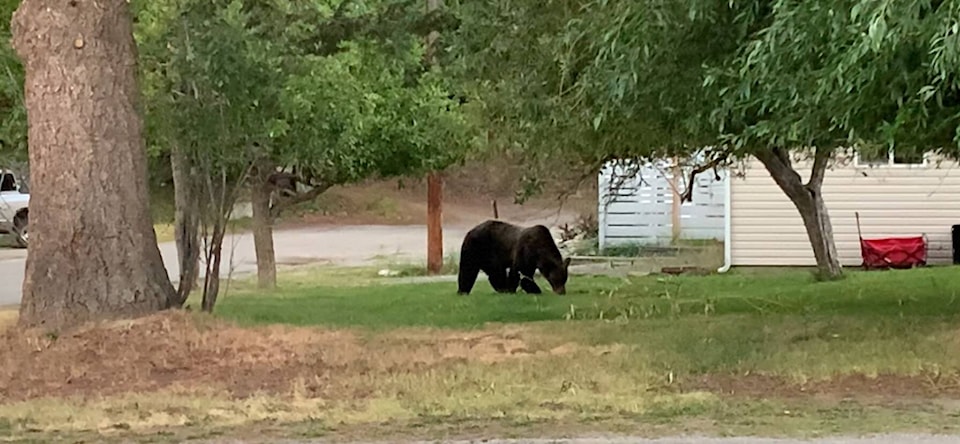Last week, the Bulletin reported that a grizzly bear had been trapped and taken out of town by Conservation Officers.
The Conservation Officer Service has now confirmed that the bear was taken out and euthanized.
CO Sgt. Melenka says the it is not a part of their job that they like, but the ultimate decision on the fate of any bear that is in town is made by the wildlife biologist.
“Unless it’s an immediate threat, we trap it and the biologist makes a determination based on a number of factors,” he said.
In this case, it was the bear’s behaviour and physical condition that led to it being put down. There were no other bears with him.
“This was a fairly large, adult, male bear,” Melenka said. “He was quite skinny and we don’t know why. Examination after it was put down shows that his teeth were okay. Maybe he was run out of a berry feeding area by another bear. We just don’t know. But he was a 100 or 150 pounds below what he should weigh at this time of year.”
But the bear was exhibiting very un-grizzly behaviour, he said, including being out feeding in the middle of the day with no apparent fear of humans. Melenka says they got a number of calls that he was chasing people.
“He was a considerable threat to public safety, he wasn’t acting normal. It’s not very often a grizzly climbs trees to eat apples. He was becoming bold, protecting his food source.”
Given his behaviour and his physical condition, the determination was made that the bear was an unlikely candidate for relocation.
“He was unlikely to do well being moved,” Melenka said. “It’s unfortunate. It’s a part of our job none of us like.
“At one point he was about 25 feet from me but I didn’t know he was there. He came out behind me. I looked down the street and there were kids on bikes, someone walking a baby in a stroller. The chances of someone coming along and startling him were good.”
Melenka says that getting a call for a grizzly in town is rare.
“We usually get grizzly calls from the outlying areas, Meadowbrook, Ta Ta Creek or Wycliffe area. And usually the bear is going after livestock or chickens.
“This bear was an odd one. It was first sighted in the high school field in broad daylight, in 30 degree weather. He made his way right through town. He was out all day, every day.
“When I first got the call I thought ‘no way, not a grizzly’. They just don’t do that. Then I saw the first picture and I thought ‘that’s a big bear’.
“He was all through the Nature Park trails too and they are used a lot. He was a bear that had the capability to cause damage, a threat to public safety. The biologist made the final call.”
He says the COs appreciate the public’s help in this case. People in the neighbourhood kept them apprised of the bear’s location, which helped them do their job.
He also advises that if you do have a problem bear in your neighbourhood you should call the provincial RAPP (1-877-952-7277) line and report it.
That can help the bear, he said.
“If a bear is a candidate for relocation, the sooner we can get it out, the better. But if you don’t call, the bear gets habituated and used to human food.”
READ: Grizzly visits Lower Blarchmont area of Kimberley
READ: Reports of grizzly bear destroying livestock outside of Cranbrook: WildSafeBC
carolyn.grant@kimberleybulletin.com
Like us on Facebook and follow us on Twitter
